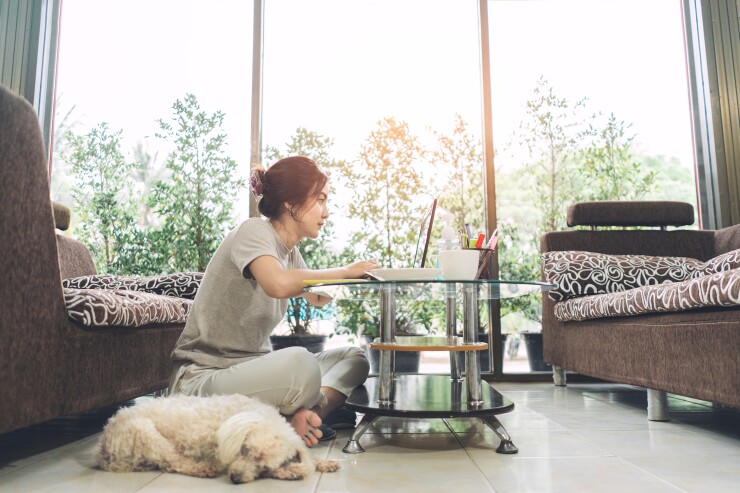Five years after the start of the COVID-19 pandemic, so much of work and daily life has gone through a massive shift. But how much of that transformation has led to permanent change?
In March, 2020, the majority of
Meanwhile, burnout is at an all-time high. In a survey by the global ed-tech company Moodle, 66% of Americans said they are experiencing burnout this year, citing their workload, lack of resources and the state of the economy as major drivers.
Read more:
"I tend to say this year after year: The things that are concerning continue to be concerning," says Matthew Owenby, chief strategy officer and former chief HR officer at Aflac. "It's remarkable that not a lot has changed in a positive direction."
For Owenby, it's clear that three challenges are haunting the workplace: The question of flexibility, high burnout and inability to unplug. The pandemic may have put a spotlight on these challenges, but that doesn't mean anything was solved. If employers want a real shot at transforming their workplace, they have to start here, explains Owenby.
Flexibility is not the antithesis of productivity
Aflac had hybrid and fully remote work structures before the pandemic, and Owenby does not see a reason to reduce flexibility anytime soon. He suggests that employers ask themselves if the ability to work from home has a negative impact on engagement or productivity before eliminating the option altogether.
Read more:
In Owenby's experience, remote work is less of a threat to productivity and more of an invitation to overwork.
"We do biannual surveys, and our engagement has remained the same or higher," he says. "The reality is we have to make sure people aren't overworking. That's what we see — when our employees are home, they don't have the natural breaks."
In the office, employees may step away from their desks for coffee, lunch or to catch up with colleagues. Owenby actually encourages employees who are working from home to schedule breaks in their day so they don't stare at their computers all day. He warns leaders against conflating remote work with laziness and instead, encourages them to assess engagement and burnout levels to better understand what their workforce needs.
Burnout is leadership's problem
As for burnout, Owenby places responsibility on leaders' shoulders. If leaders make every task feel like an emergency, miscommunicate expectations or overwhelm their teams with deadlines that could otherwise be spread out, burnout is inevitable. Yet it seems like leaders still haven't learned this lesson.
"Leaders should be directing and controlling the pace, volume and output of work to a degree," says Owenby. "It's my job as a leader not to make everything urgent, not to make everything critical. If the people that are working for me are experiencing burnout, I take that on as a 'Matthew problem,' not as an employee problem."
Read more:
Employees should know what they need to complete for the week, and managers should run interference with any last-minute requests that come from higher-ups or clients, adds Owenby.
"If you have a natural cadence with your employees, you can reduce a lot of burnout," he says. "Burnout comes from trying to meet unspoken expectations."
Unplugging is a necessity, not a luxury
The rise of remote work has made it easier for leaders to be in constant contact with their employees, but leaders have to resist, emphasizes Owenby.
"I deliberately do not disturb my team over the weekend," says Owenby. "I'm not going to send you a bunch of text messages, paragraphs long, that you have to read bleary-eyed, trying to figure out what I'm asking for."
Ultimately, the pandemic reminded corporate America that a healthy work-life balance cannot be up for debate, but whether that message was internalized and acted upon comes down to leadership. But Owenby stresses that it's not too late to learn a few lessons.
"You can give people all the PTO and flexibility in the world," says Owenby. "But if leaders driving the work aren't managing the volume for employees, the burnout issues will never go away."






